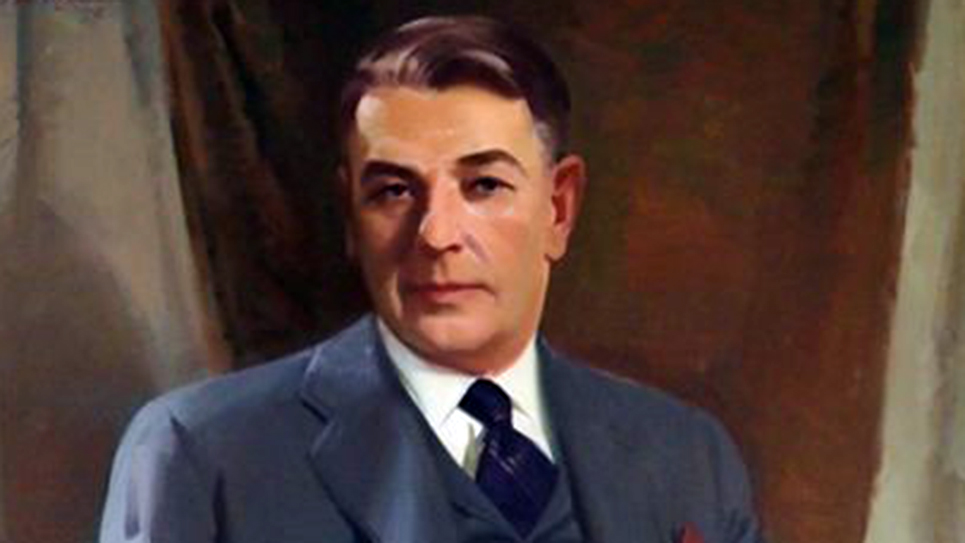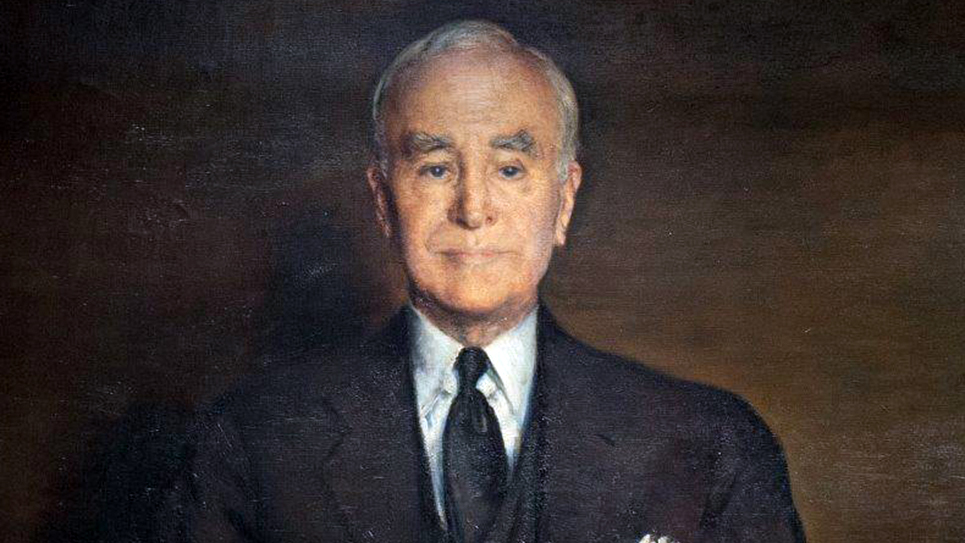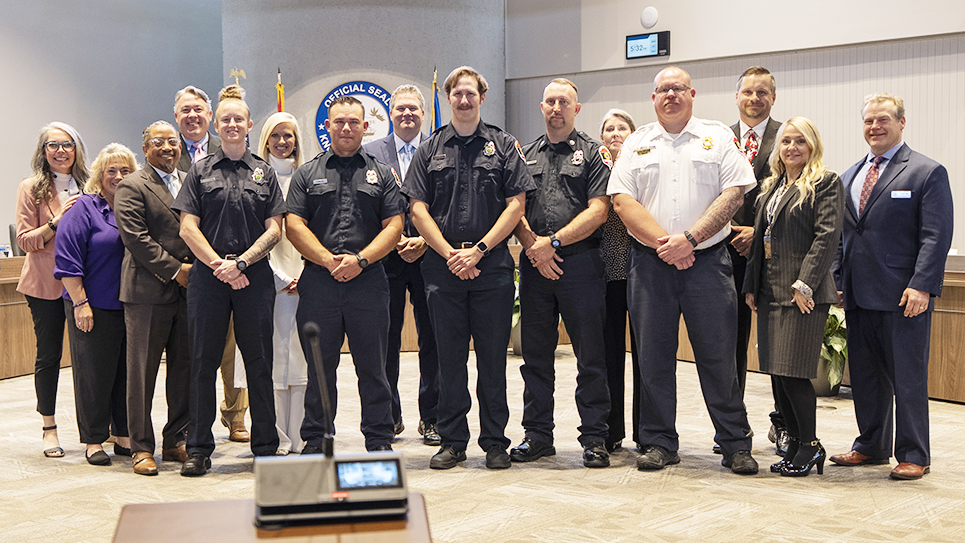E. W. Marland of Oklahoma
By Ray Hill
The life story of Ernest Whitworth Marland is a tale of the rise and fall of an American businessman and politician like a Hollywood movie. It is the story of rising to amazing heights and falling just as far. Marland made an enormous fortune and lost it and made another, even bigger fortune and lost it as well. In his time, Ernest Whitworth Marland went from near-billionaire to bankrupt. E. W. Marland was the New Deal governor of Oklahoma who promised Oklahomans he would bring a “Little New Deal” to the Sooner State. Much of Marland’s great successes in business were jolted by the waves of events in difficult times. Ironically, those same hard times elevated him to high public office.
“I would like to be governor of Oklahoma,” Marland said in 1934. “I will not be coy or indefinite about it.” That statement was not like a typical politician. One reporter who had covered Marland for years wrote while his methods were oftentimes “unorthodox,” he believed the former oilman was a “natural” in politics.
This unorthodox man was born in Pittsburgh as one of eight children and the only son of Alfred and Sara Marland. Alfred Marland immigrated from England and made a fortune by inventing metal bands for bailing American cotton. Mr. Marland saw to it his son was educated in both public and private schools in Pittsburgh and Tennessee. The younger Marland was something of a prodigy, finishing the University of Michigan Law School at nineteen. So, too, did Alfred influence his son profoundly. As a mill owner, Alfred Marland liked to brag he had never once suffered a strike and had always been recognized as being fair to his employees. That same attitude would apply to the son, who bought a bank to loan money to his employees at lower rates. E. W. Marland also did the then unheard of thing by providing health and dental care for his workers.
Marland began his career as a lawyer in Pittsburgh, but he became highly interested in geology, which led to his remarkable ability to find oil. Marland’s first fortune was made in coal and the promotion of oil.
Marland began working for John Guffey (father of Pennsylvania U.S. Senator and Democratic boss Joseph F. Guffey) in the oil business. Marland was successful enough to marry Virginia Collins and was a millionaire in his own right by the time he was 33. The Marlands never had children of their own, but when Virginia’s sister and her husband George encountered difficulties, they adopted the couple’s children, George and Lydie. Adopting Lydie and George was also a way for the Marlands to share their wealth.
Unfortunately, during an economic downturn, E. W. Marland lost his first fortune during the “panic” of 1907, which left the businessman jobless and without any money. Marland’s loss was immense. Millions of dollars were gone. Virginia and E. W. decided to move to Oklahoma for a fresh start and because of the booming oil business. Marland formed a new company, the 101 Ranch Oil Company, which gave him the fresh start in life he had sought. Indeed, by 1920, Marland’s personal fortune was estimated at $85 million, which is the equivalent of more than $900 million today. Living in Ponca City, Oklahoma, E. W. Marland started the Marland Oil Company, which was incorporated in Delaware and headquartered in Ponca City. Even the shrewdest of businessmen are not infallible and Marland made a mistake in partnering with the infamous financier J. P. Morgan because he needed a steady stream of financing for his business. Marland’s company was taken from him in a hostile takeover by the Morgan interests and Marland Oil was combined with Continental Oil & Transportation Company, which became known as CONCO. For the second time in his life, E.W. Marland lost his fortune. Never one to give up, Marland quickly formed yet another oil business in partnership with William G. Skelly, a highly successful oilman and staunch Republican.
Considering his success as a businessman, many would likely have thought E. W. Marland to be a steadfast Republican himself, but he was a Democrat, having changed his party affiliation after blaming the bankers in general and the House of Morgan in particular for the loss of his fortune and resulting bankruptcy. His treatment at the hands of the ruthless J. P. Morgan ingrained in Marland a profound distrust of Eastern financiers and Wall Street. Marland was a fervent supporter of Franklin D. Roosevelt in 1932. That same year, E. W. Marland was a candidate for the U.S. House of Representatives against Republican incumbent Milton C. Garber in Oklahoma’s Eighth Congressional District. Garber was well-known and possessed a solid background, having served as an Associate Justice of the Supreme Court of the Oklahoma Territory. Garber had been in Congress for a decade when he was challenged by E. W. Marland.
Milton Garber was a successful businessman, having his fingers in a number of pies, including oil, half ownership of the Oxford Hotel, and the Enid Radiophone Company. Garber also owned the Enid Morning News, which was eventually merged with the Enid Eagle. Congressman Garber had won better than 60% of the vote in 1930, but Oklahomans were so desperate and hard pressed by drought and the Great Depression, they only gave Garber 38% of the vote in 1932.
It was an impressive start for a beginner in politics. Marland was the first Democrat to win the district, which had been Republican since Oklahoma first became a state. E. W. Marland went to Congress where he kept his word and ardently supported President Roosevelt and the New Deal. Two years later, Marland opted to run for governor and faced a host of strong opponents, including former Governor and incumbent Commissioner of Corporations (an elected office) Jack Walton, who had been impeached as chief executive. Gomer Smith, one of the greatest orators in the Sooner State and equally successful in courtrooms as a practicing attorney, was also on the ballot. Lieutenant Governor Robert Burns ran, as well as state Attorney General J. Berry King. In all, there were thirteen candidates who filed to run for governor of the Sooner State.
Governor William H. Murray, “Alfalfa Bill,” was the incumbent governor and was popular with Oklahomans. Governor Murray backed state Senator Tom Anglin in the Democratic primary. Speaking on behalf of Anglin in Enid, the governor was overheard snapping, “Anybody but Marland.”
Marland adopted a campaign slogan that resonated with Oklahomans: “Bring the New Deal to Oklahoma.” Voters were reminded Marland had paid his employees good wages and about his many philanthropies. Marland won the Democratic primary with just over 30% of the vote. The former oilman beat Anglin by 55,000 votes and the state senator decided not to contest the runoff election. The Republicans nominated their strongest candidate in former U.S. Senator William B. Pine. Marland won with 58% of the vote.
The Marland Administration was summed up by Speaker of the House Leon C. Phillips’ exclamation: “Good heavens, he’s added another $2,500,000 to the list since I saw him yesterday!”
Marland had difficulty enacting his “Little New Deal” and in the middle of his gubernatorial term, decided he wanted to return to Washington, D.C. Governor Marland had hoped to topple Leon C. Phillips, the redheaded and rotund cigar-smoking speaker of the house, who was at best, lukewarm, if not outright against the New Deal, whether it be local or national. The governor had pushed his supporters in the legislature to beat Speaker Phillips and failed. Governor Marland’s program in the Oklahoma state legislature was bogged down. Marland was pushing old age pensions for Oklahomans. “There can be no State help for the widow’s son or daughter – – – unless these bills pass,” Marland warned. Pointing to another bill backed by his administration, Marland issued another warning in an attempt to rally support for providing for the unemployed. “The State cannot offer work to our unemployed – – – until these bills pass.” Marland had also lost popularity in enacting new taxes.
That likely helped Marland to make a decision he likely came to regret. Marland announced his candidacy for the Democratic nomination for the United States Senate. The incumbent was Thomas P. Gore, grandfather of the writer Gore Vidal, a brilliant speaker who was blind. Gore had been one of the first of the two original U.S. senators elected by Oklahomans after the territory became a state. Senator Gore had been rejected by Oklahoma Democrats in the 1920 primary due to his opposition to President Woodrow Wilson. Gore attempted a comeback in the 1924 Democratic primary for the United States Senate and had only drawn 19% of the ballots cast. Gore made one of the greatest political comebacks in history by winning the 1930 Democratic primary and runoff election.
Governor Marland faced two congressmen inside the Democratic primary as well as Senator Gore. Gomer Smith had won a special election to Congress in 1937 and wanted a promotion to the Senate. So, too did Congressman Joshua Bryan Lee. Once a professor of oratory and named for perhaps the best known golden-tongued speaker of the age, William Jennings Bryan, Lee proved to be a remarkable orator himself. Lee’s campaign was energized by an astonishing number of his students who worked hard to elect him to the United States Senate, who were labeled Lee’s “Rover Boys.”
E. K. Gaylord, a media titan and editor and publisher of the Daily Oklahoman editorialized, “It is unfortunate for Oklahoma that neither Governor Marland nor some of his predecessors paid any attention to oft repeated warnings of disaster when taxes were being made mountain high.” As Gaylord reminded his readers, the Marland Administration had tried to “increase taxes vastly.” Much of the governor’s popularity evaporated. Still, Marland ran once again upon undeviating support of Roosevelt and the New Deal.
The 1936 Democratic primary became a four-way race between Congressman Josh Lee, Congressman Gomer Smith, Governor E. W. Marland, and Senator Thomas P. Gore. Sooner State Democrats went to the polls and dealt E. W. Marland a stinging defeat. Josh Lee won the nomination with 33% of the vote. Marland ran a distant second with 23%.
Marland still had two years left on his term as governor. At the close of his gubernatorial term in 1938, E. W. Marland once again announced for the United States Senate. The incumbent, Elmer Thomas, was not unpopular with Oklahomans; quite the contrary, and the greatest campaigner of the age, President Franklin Delano Roosevelt, traveled to the Sooner State to endorse Senator Thomas. Two irrepressible campaigners, E. W. Marland and Gomer Smith, tried hard to unseat Senator Thomas to no avail. Thomas won 45% of the votes cast, while Marland ran third with just over 20%.
Marland made his last campaign for public office in 1940 when he ran to regain the seat he had won in the U.S. House of Representatives eight years earlier. Marland challenged Phil Ferguson, who had succeeded him in the House. E. W. Marland won a paltry 12% of the vote.
One of the more controversial decisions made by E. W. Marland came after his first wife Virginia’s death in 1926; in 1928 Marland had his adoption of Virginia’s niece Lydie annulled and the two married. They were together until his death.
Following his unsuccessful congressional campaign, E. W. Marland was suffering from a heart condition. The 67-year-old former governor’s heart gave out on October 3, 1941.
The grand E. W. Marland mansion, a 55-room Italianate behemoth, still stands in Ponca City and to understand the depth of Marland’s fall, the Marlands lived in what were originally the chauffeur’s quarters on the great estate, a 5-room bungalow which stood 75 feet from the imposing mansion. After having disappeared for many years, Lydie came back home and resided in the chauffeur’s quarters in her last years. All E. W. Marland could leave to his widow in his estate were three pieces of real estate and a “few personal possessions.”
© 2023 Ray Hill







